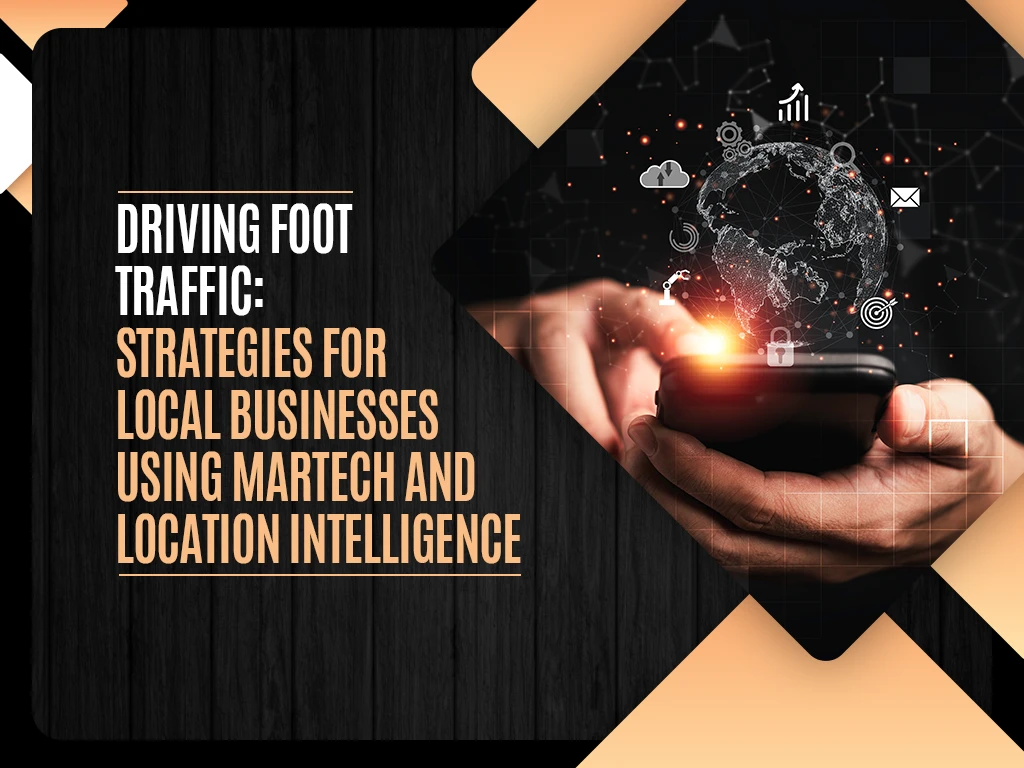Driving Foot Traffic: Strategies for Local Businesses Using MarTech and Location Intelligence

In today’s age small businesses are challenged to attract customers from their screens and into their physical stores. The term “MarTech,” which stands for marketing technology and the use of “Location Intelligence” have become tools for business owners. By leveraging these resources understanding foot traffic no longer needs to be left to chance; it can be a thought out strategy.
When local businesses successfully incorporate MarTech and Location Intelligence into their operations they do not enhance their visibility. Also personalize their marketing strategies to connect with potential customers at the right times. This article explores how professionals in B2B settings at the level can utilize these technologies to rejuvenate their presence in the market and attract visitors.
Importance of MarTech in Driving Foot Traffic
MarTech is about blending marketing and technology to enhance how businesses implement their marketing plans. It comes in shapes and sizes such as customer relationship management systems, content management platforms and various analytics and reporting tools.
MarTech plays a role in attracting customers to stores since today’s consumers desire personalized interactions with brands. Through MarTech local businesses can develop tailored campaigns and genuine customer interactions that are likely to spur action and attract customers to visit their stores.
How MarTech Enhances Customer Engagement and Targeting
Local businesses leverage marketing technologies to gather and analyze customer data in ways. This data enables them to categorize audiences, reach out to customers, near their stores and create tailored messages that strike a chord. For example by combining email marketing platforms with customer data systems businesses can launch personalized email campaigns precisely timed to attract visits. Likewise through advertising platforms businesses can customize ads for customers based on their preferences and geographical location.
Utilizing Location Intelligence for Local Businesses
Location Intelligence, often an aspect of broader business intelligence, deals with the data and tools focused on geolocation. This technology provides valuable insights into where customers are and how they move, enabling businesses to make informed decisions.
Benefits of Location Intelligence for Marketing Strategies
Utilizing Location Intelligence strategically can provide businesses with insights into the behavior of consumers in their area, such as foot traffic trends, durations spent in store and the impact of promotions in regions.
The analysis of data can also guide decisions related to opening branches, expanding operations or adapting product offerings based on local preferences. For businesses especially, having a grasp of the market is essential. By examining location data companies can fine tune their marketing and sales approaches to ensure they stay appealing and relevant to the community.
To delve deeper into location intelligence, read the article.
Strategies for Local Businesses
Local businesses have several MarTech and Location Intelligence-powered strategies at their disposal to increase foot traffic. What follows are some practical tactics that leverage these technologies.
Personalized Offers and Promotions
MarTech enables the creation of highly personalized offers and promotions that cater to an individual’s interests and buying behavior. Implementing a customer loyalty program integrated with a mobile app can provide the added incentive to visit a store for a personalized reward or discount.
Hyper-Local Targeting
Hyper-local targeting focuses on very specific geographical areas, tailoring marketing campaigns to the interests and behaviors of the inhabitants. For example, a local clothing store might promote raincoats online if local weather reports predict rain, ensuring they are top-of-mind when customers are deciding what to wear that day.
Geofencing Campaigns
Geofencing uses GPS or RFID technology to create virtual boundaries, triggering an action when a mobile device enters or exits the predetermined area. This can be used to send push notifications about in-store deals or events to anyone who enters the geofenced area.
In-Store Beacons
Beacons are small, Bluetooth-enabled devices that can send messages or prompts to the smartphones of nearby customers. For example, a customer browsing the shoe section of a store could receive a message on their phone with a discount for footwear.
By deploying these strategies thoughtfully, local businesses can attract and retain customers through thoughtful digital interaction that translates into real-world visits and sales.
Measuring Success
It is critical that local businesses are able to measure the success of their MarTech and Location Intelligence-driven strategies. Here are some key performance indicators (KPIs) that can be used:
- Monthly foot traffic increase
- Conversion rates from digital marketing or in-store promotions
- New customer acquisition rates
- Return on investment for different MarTech tools and advertising campaigns
Case Studies or Examples
A regionally-popular café implemented a beacon strategy, driving a 10% increase in foot traffic in one month, while a local boutique saw a 15% conversion rate with personalized email campaigns.
Conclusion
In summary, combining MarTech and Location Intelligence presents a variety of approaches for businesses to enhance their presence in the market and attract more customers. With consumers seeking interactions it’s vital for local businesses to adapt to these advancements and use them to offer tailored experiences. The future success of traditional stores hinges on their ability to engage with customers both online and offline. By embracing MarTech and Location Intelligence local business proprietors can transform their stores into not spaces but hubs, for creating memorable experiences.

